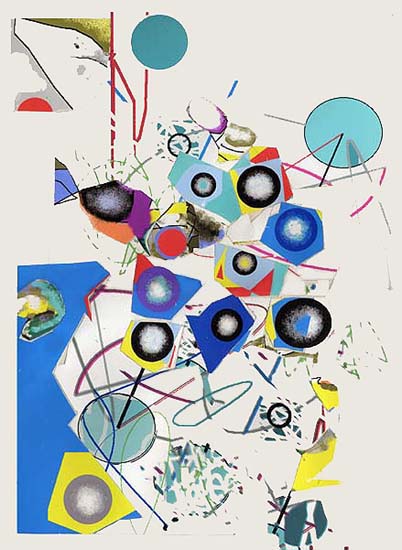
1. The viewer should know the object is made with a computer and have some idea of how.
2. Older programs can be used to question or interrogate newer programs: the "FX" of 15 years ago suggest how the effects of the present will become dated.
3. The physical object (i.e., printouts) can be used to question or interrogate the virtual painting: how much of the work is just the pretty glow of backlit screen light?
4. The printouts can be used against themselves: cutting and collage-ing disturbs the factory seamlessness of commercial home printing.
5. A dialogue between screen-collage (cut and paste tools) and physical collage (scissors and tape) can be useful.
6. Does the collage have presence when it hangs on a wall? Does it say anything? If not, then it could probably stand additional overprinting, cutting, and taping. Hate all hardware and software.
7. The so-called formal aspects of the work are raw material for an emotional statement. Spheres, scribbles, "gestures," planes, and polygons are the easiest thing for a computer to make and should be used, but made difficult somehow.
8. Consider the past and alternative futures. Cubism, surrealism, etc are readymades and also available for use (just like spheres, scribbles, etc). What would a Blaue Reiter artist have done with a PC? is an OK question. Can I imitate this particular Blaue Reiter artist? isn't.
jpeg is Jungle Spheres, 2001 (ink, paper, linen tape 17 x 12.5 inches)
